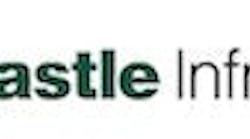California’s struggle with drought has emphasized the need for sustainable water use, an issue that transcends its borders. The U.S. Drought Monitor reports that at some point over the past decade, nearly half the U.S. has been in some form of severe drought.
Rainwater or storm water harvesting is one approach to meet the challenge. A case in point is the construction of the Expo Rail Operations & Maintenance Facility in Santa Monica, California for the Metropolitan Transportation Authority (METRO). While it meets operational demands for the region’s increased transportation needs, it also creates impermeable surfaces that require innovative storm water management approaches.
Located on 8.3 acres, the new Operations & Maintenance Facility complex includes a 75,000-sq ft main building, a 9,500-sq ft secondary structure, a 6,000-sq ft maintenance building with an automated vehicle washer that includes a reverse osmosis rinsing machine with a 100% water reclamation system, a 4,500-sq ft servicing platform, a paved roadway and two adjacent parking lots.
The Challenge
Landscape irrigation, vehicle washing and other water needs required an estimated 5,500 gal per day at the new facility. Focusing on “green” building and energy efficiency, METRO officials sought a low-impact development design with zero storm water runoff. Poor soil conditions precluded soil infiltration to replenish aquifers. As a result, the best option was a storm water harvesting system for non-potable uses to reduce reliance on city water.
The Solution
Oldcastle Stormwater assembled a team to provide the total storm water management system, including a 400,000-gal StormCapture cistern, an upstream pretreatment unit, and a downstream storm water harvesting system from Water Harvesting Solutions (WAHASO). The Murray Co. installed the pretreatment and StormCapture systems during the spring of 2014. The harvesting equipment was installed in August 2014. The facility finally became operational in May 2015.
The solution leverages across-the-board efficiencies in water use by reducing the impact on the municipal water supply, land footprint, system maintenance time and budgetary concerns. “Oldcastle has a diverse portfolio of products that afforded the project economies of scale and met the required 50-year design life,” said Patrick Wong, W2 Design president and senior project manager.
The 400,000-gal StormCapture system—which occupies a small footprint under the parking lot due to its large storage capacity per sq ft of area—utilizes 29 StormCapture precast concrete modules measuring 12 ft high by 7 ft wide by 15 ft long. One unique aspect of the project is that one module in the layout is deeper than the others and houses an integrated pump station to supply water for the harvesting system.
“Our standard modules for the project are 12 ft deep,” said Jason Herrman, engineering manager for Oldcastle Precast. “We supplied one 7-ft-by-15-ft module which is 13 ft deep. It is used to completely drain down the system and allow full utilization of the entire 400,000 gal of storage capacity.”
Other components included nine precast concrete link slabs measuring 9 ft wide by 17 ft long that were used at interior locations instead of full modules, and five standard rings up-to-grade with cast-iron lids (manholes) located at ground level for maintenance access. The system also has a 40-mil high-density polyethylene liner with geotextile fabric.
Storm water runs from the rooftop downspout leaders and impermeable ground surfaces into the onsite storm drain system. The baffle box screening and hydrodynamic separation is designed to effectively remove sediments, total suspended solids and hydrocarbons. Trash and debris, organics, and gross solids collect in a raised screening basket where pollutants dry out between storm events.
Pretreated storm water flows into the StormCapture system’s concrete cistern modules, temporarily storing it for harvesting purposes. Water from the cistern exits into the concrete pump station module, which also serves as an internal storm system overflow bypass should the cistern be filled to capacity during an extreme rain event.
In response to increased non-potable water demand, a drop in the system pressure signals the pump station’s main pressurization submersible pumps—duplex variable frequency drive pumps providing 70 gal per minute (gpm) at 67 psi—to begin operating to meet demand. The pumps cycle back and forth to equalize wear. Should one pump fail, the second pump can meet demand.
The pumps direct storm water up through the WAHASO harvesting equipment package located in an aboveground enclosure. In the first step, a mechanical filter removes particulates down to 50 μ. In the second phase, a bag filter removes remaining particulates down to 5 μ. Water is then sanitized with ultraviolet (UV) light rated to handle 70 gpm to kill harmful bacteria and pathogens, ensuring safe water for public exposure during irrigation and vehicle washing.
“We are able to capture all of their runoff in this one underground system, allowing them to keep their parking lot intact and provide the space they need, as well as the desired sustainable benefits of harvesting water,” Hermann said. “In addition, the 400,000-gal cistern was leak-tested to confirm water-tightness after installation. It passed the test.”
The harvested water will be used for the irrigation of facility landscaping and for train washing. The extensive train wash system features both manual and automated wash stations with reverse osmosis and water reclamation, and it has a capacity of six rail cars at once. “Out of 10 gal of water, only two are ‘wasted’ through evaporation or splashing onsite,” Wong said. “The water harvesting system is designed to capture close to 50% of the annual rainfall typical to the area, which historically is dry in mid-summer.”
“California gets seasonal rains, but the cistern is large enough for us to harvest retained water over a period of months to maximize the system’s value,” said John Bauer, WAHASO president. A municipal water bypass valve automatically opens when water in the pump station and the StormCapture cistern drops below a preset level. WAHASO’s WCS-100 control system logs and reports the amount of water available in the cistern, how much is captured for harvesting purposes, and the amount of municipal water demanded by the system.
WAHASO also integrates OptiRTC technology from GeoSyntec into its storm water harvesting systems, which uses predictive modeling to actively determine storm water detention requirements and release only as much stored water as necessary to meet capacity requirements for each forthcoming storm event. OptiRTC monitors local weather forecasts and onsite device inputs to anticipate storm flows to detention within 24 hours of occurrence. It lowers cistern storage levels ahead of the precipitation event in proportion to the expected storm volume and closes the outlet valve during storm events to capture and retain water for harvesting.
“Without the OptiRTC capability of actively managing the cistern level, we would have been required to meter out all detained water over a short period of time, minimizing any real value of the harvesting system,” Bauer said. All systems designed by WAHASO achieve NSF/ANSI 350 standards for water reuse treatment systems, which defines acceptable water quality for surface irrigation, toilet flushing, cooling tower makeup and other non-potable uses.
Going Forward
The system was designed to minimize maintenance by onsite personnel. Sediment and other debris captured by the pre-filter must periodically be evacuated to keep the cistern free of sediment and organic matter, especially first-flush debris after major rain events. In the filtration skid, bag filters typically are changed every four to eight weeks, and the UV bulbs are replaced every 10,000 hours, which equates to a year of continuous use.
“The storm water management techniques are set to contribute from one to four points toward a LEED gold rating,” said Renee Azerbegi, president and project manager for Ambient Energy, a consultant engaged by Maintenance Design Group for LEED project facilitation.
[Visit Oldcastle's SWS Storefront]
“Because of the drought, water conservation issues are being significantly heightened,” Wong said. “Technology for pretreatment, post-treatment and storage is available today. Storm water treatment and management is certainly here to stay.”







